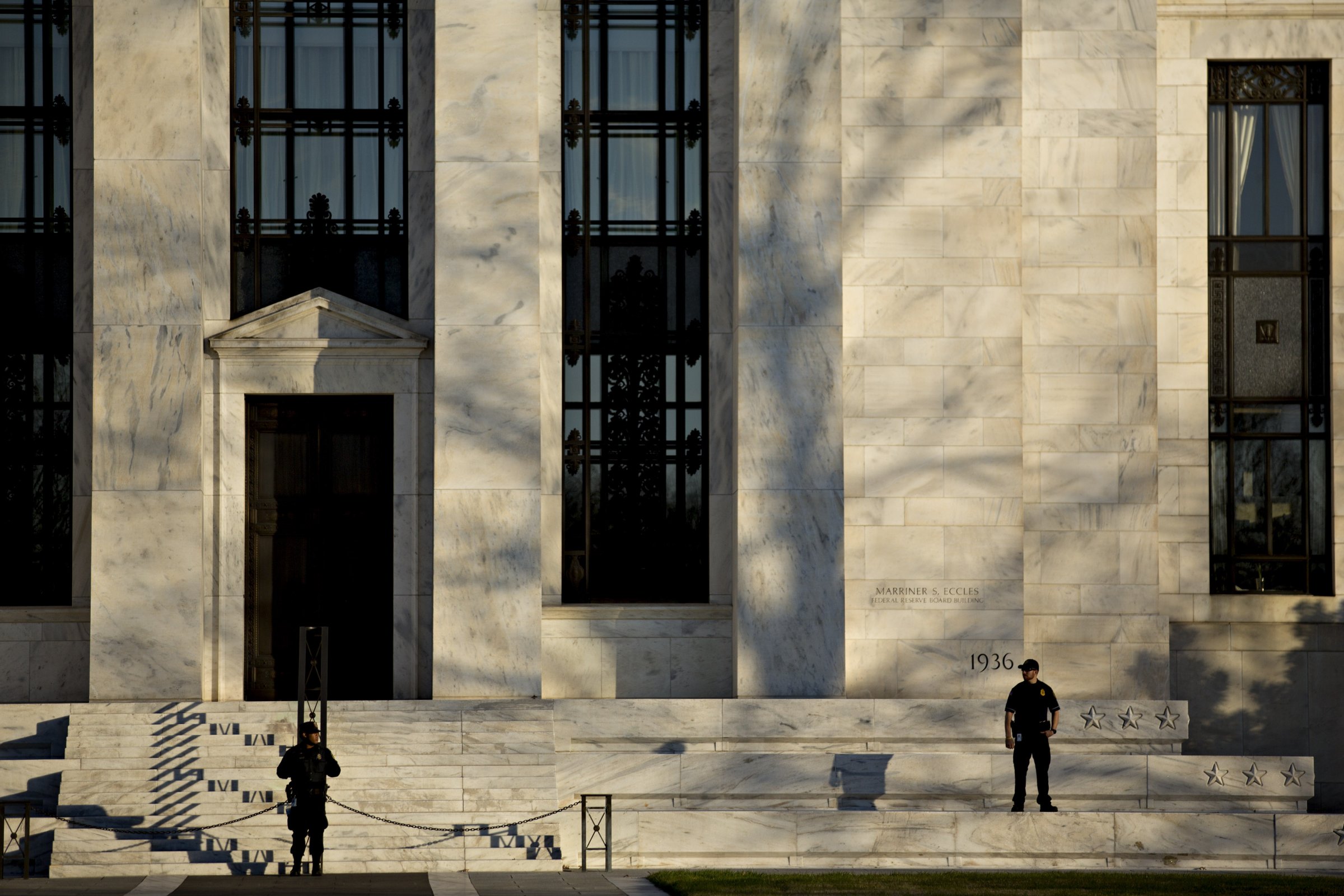
In one of the worst kept secrets in economic history, the Federal Reserve is expected to officially increasing its benchmark interest rate to 0.25% on Wednesday. It’s the first increase since 2006 and it ends the last remaining hangover of the financial crisis.
But now the fun begins. Rates have sat at historic levels–zero–for seven years to the day. After such a long stretch of cheap money, there appears to be more nervousness than usual about what will happen. The stock market has gyrated over the past month. Some of that has been because of the price of oil, and worries that corporations, particularly energy companies, may not be able to pay back their debts. But at least some of the worry is about interest rates.
That’s because Wednesday’s decision is unusual. Typically, the seven board members agree to move up interest rates to fight off inflation. But this time around there hasn’t been much inflation. And the economy is growing at a weaker pace than when the Fed has hiked rates before. Nonetheless, Chairwoman Janet Yellen’s announcement appears to come out of a desire to give the Fed a way to counter a downturn in the economy in the future. Keeping the rate at zero gives it little recourse if the Fed needs to help stimulate markets.
It’s also strange for the U.S. central bank to raise interest rates, while central banks in Europe and Japan’s continue to lower as their respective interest rates in order to try to get over the last hump of their own downturns. That’s likely to add to the volatility of the market after a rate hike occurs.
How will this impact you?
For stocks, the first interest rate increase is likely mostly priced into the stock market. What happens next is a bigger unknown. Looking at money markets, Martin Hochstein of Allianz Global Investors estimates that investors believe that the Fed will eventually raise the interest rate to 1.2% by 2017. But according to the Fed’s economic projections, rates are likely to reach 2.6% by 2017. Historically speaking, though, Hochstein found that analysts underestimated the last three rate hike cycles. So that 1.4 percentage point difference is a “huge gap that could start some troubles,” added Hochstein.
If the Fed ends up raising rates higher and quicker than investors expect that will likely be bad for the stock market. Goldman Sachs says that valuations of the stock market tend to drop 10% in the first year of tightening cycles. In the past, shares of energy, industrials, and technology often outperform other areas of the economy during a rising rate cycle. But given dropping oil prices and lower demand from emerging markets, things may play out differently this time, at least for energy and industrials.
Banks often get pointed at as potential buys when interest rates rise. And shares of the biggest banks have been rising lately. That’s because they can benefit from higher interest rates as long as they don’t have to pass that higher interest off to borrowers. But TIAA-CREF’s data shows that financials only outperformed the market 14% of the time, dropping an average of 4%. Utilities tend to underperform when rates rise. The sector has returned -5.8% on average, if you exclude 2004’s blip. But 2004 shows there can be surprises. In that tighten cycle, utilities were up 28%.
For bonds, when interest rates rise, prices fall. And this time could be worse than usual. That’s because interest rates are so low, they won’t compensate for price drops. Using today’s yield, Hochstein ran simulations using past interest rate rises, finding that short term Treasuries could fall as much as 1.3% while long-term ones could drop 10.4%, if rate hikes proceed as the market thinks. The current yield on the 10-year Treasury bond is 2.3%. Meaning it could take you five years to earn back in interest what you lose in price over a year. So while bonds are typically a safer place for your investments, these days that likely not the case, especially considering the growing worries about corporate credit quality.
The benefit could be anyone who has money in a bank account. According to data from the Federal Reserve, Americans households and non-profits (the Fed combines the two categories) have just over $8.3 trillion in bank savings accounts. So a 0.25% increase could mean an extra $21 billion in interest, or about $163 per American household, a year. But, again, it’s not clear that banks will actually pass that extra interest along to savers.
As for borrowing, there is already a large gap between interest rates and what most people pay on their credit cards. Greg McBride of Bankrate.com says it usually takes more than one interest rate hike to impact credit card rates. Variable rate home loans usually adjust once a year. If the Fed raises rates two or three times before your next loan adjustment, then “you could see a noticeable interest rate increase” on your house payments, adds McBride.
But most borrowing rates, like 30-year mortgages, are tied to longer term interest rates, which typical rise when the economy is expected to do better. So if the Fed ends up raising interest rates without sending us into a recession, then borrowing costs for houses and autos could go up too, and that will cost consumers. But hopefully the extra cost will be a small price to pay for a better economy.
More Must-Reads From TIME
- The 100 Most Influential People of 2024
- Coco Gauff Is Playing for Herself Now
- Scenes From Pro-Palestinian Encampments Across U.S. Universities
- 6 Compliments That Land Every Time
- If You're Dating Right Now , You're Brave: Column
- The AI That Could Heal a Divided Internet
- Fallout Is a Brilliant Model for the Future of Video Game Adaptations
- Want Weekly Recs on What to Watch, Read, and More? Sign Up for Worth Your Time
Contact us at letters@time.com